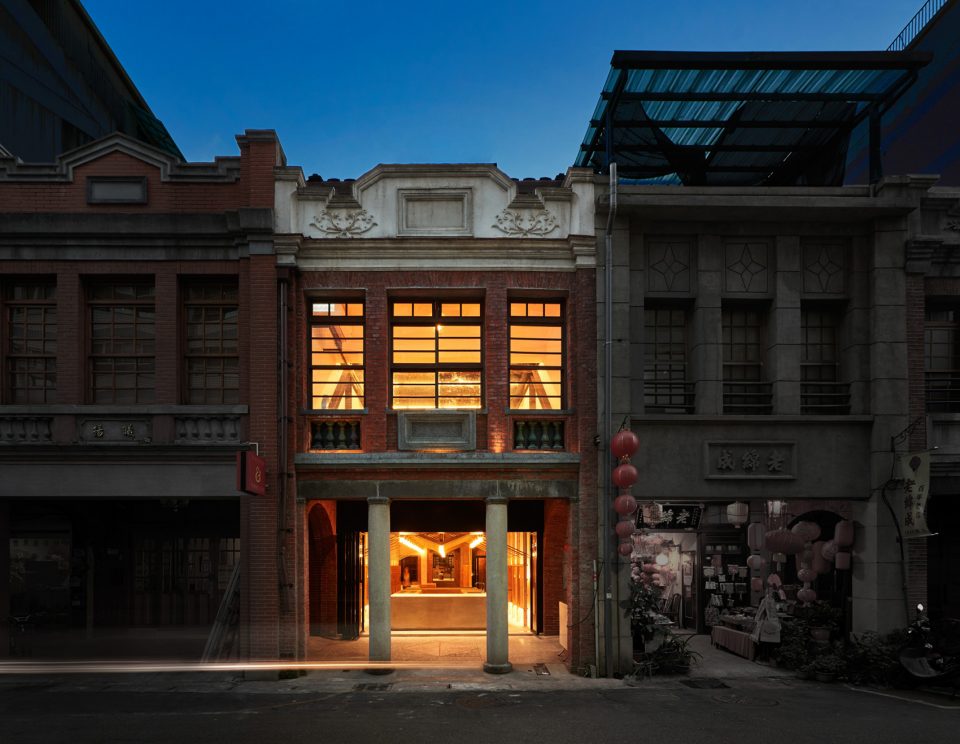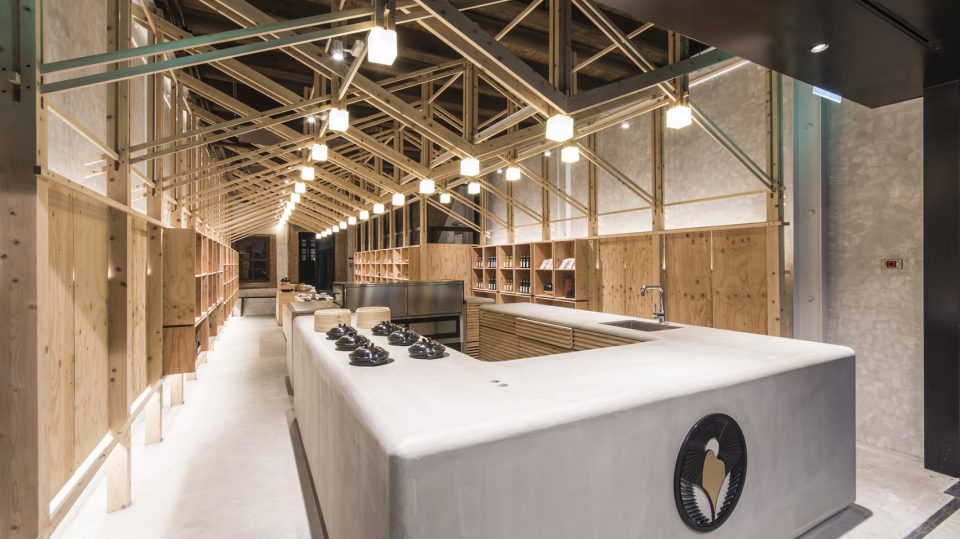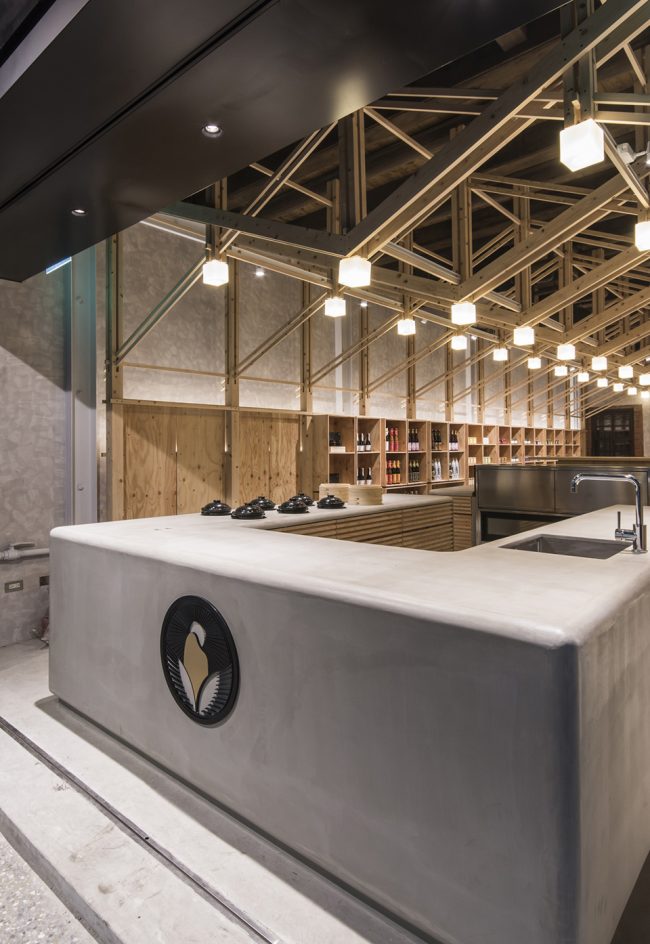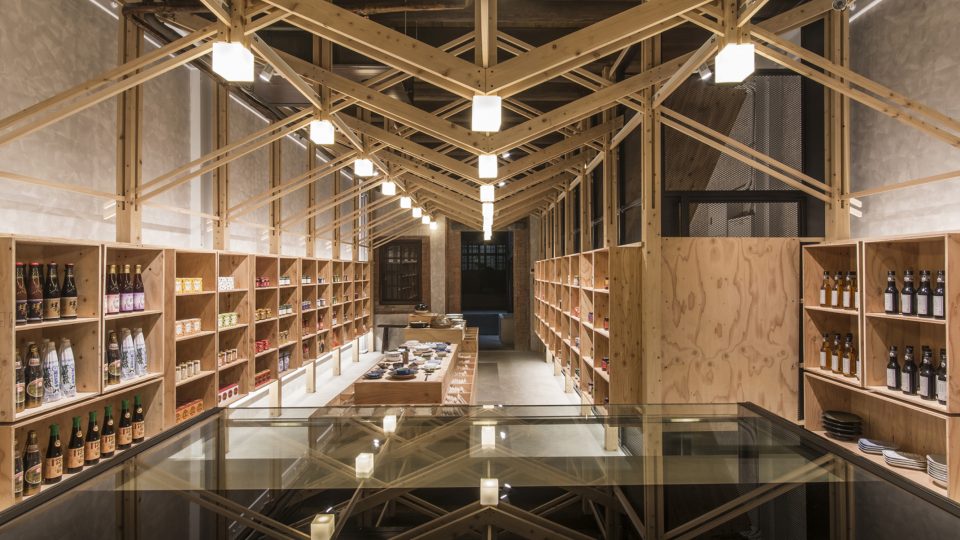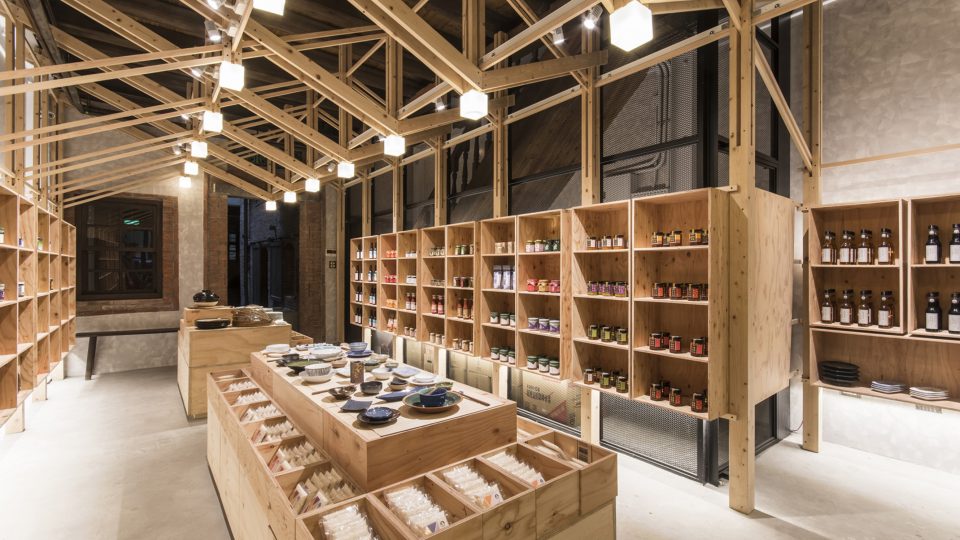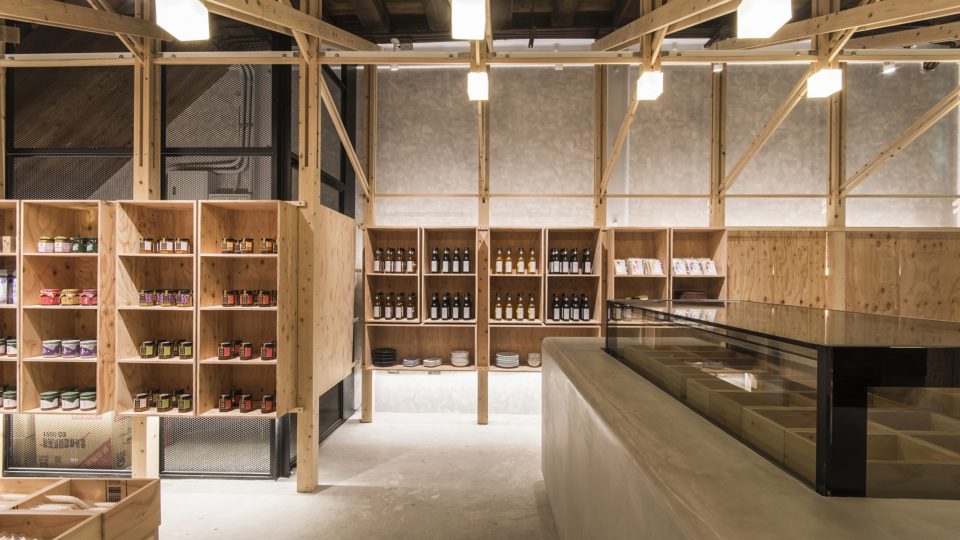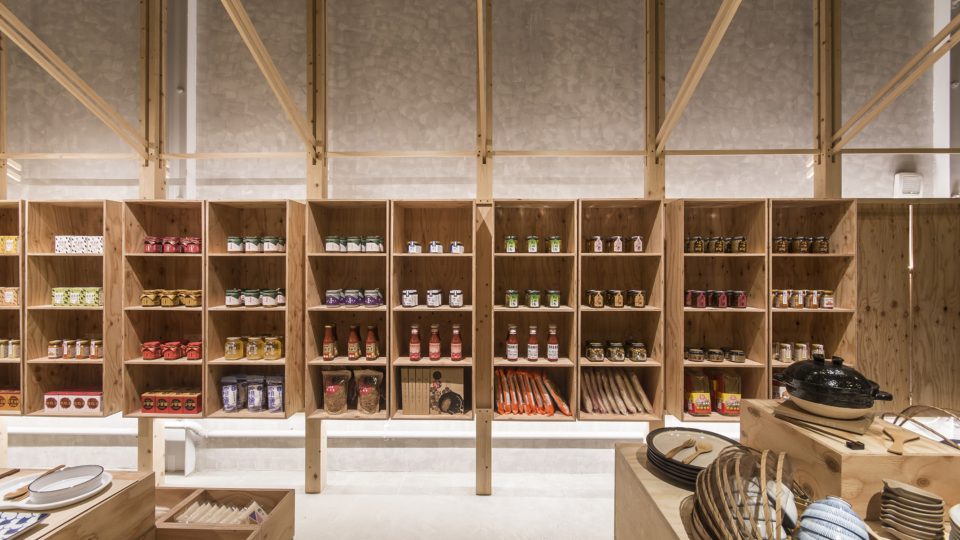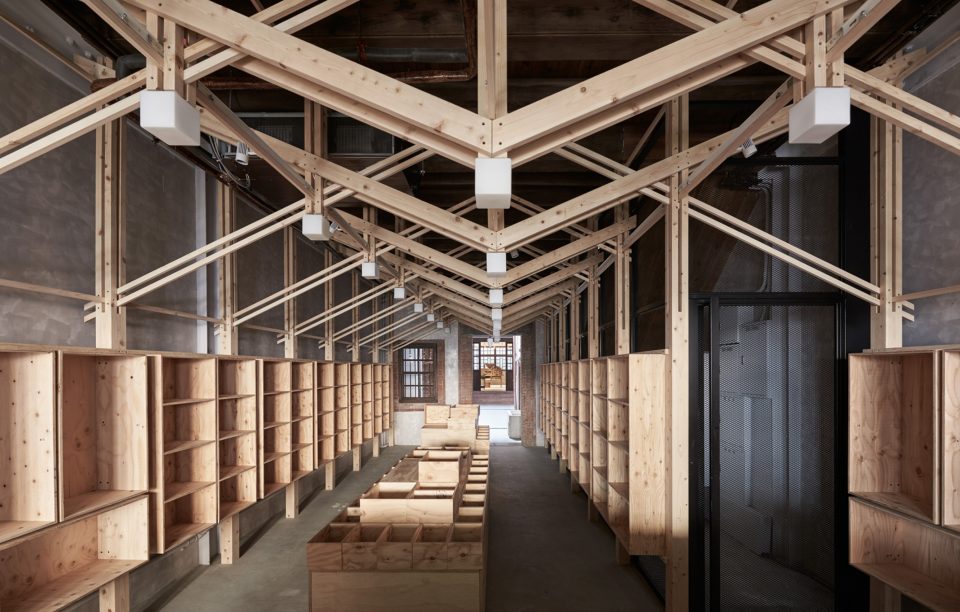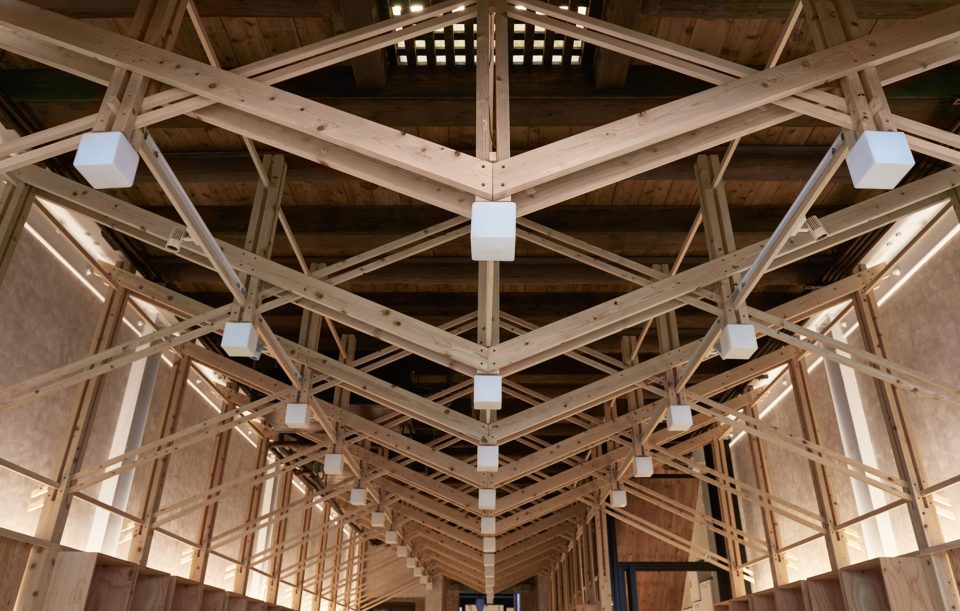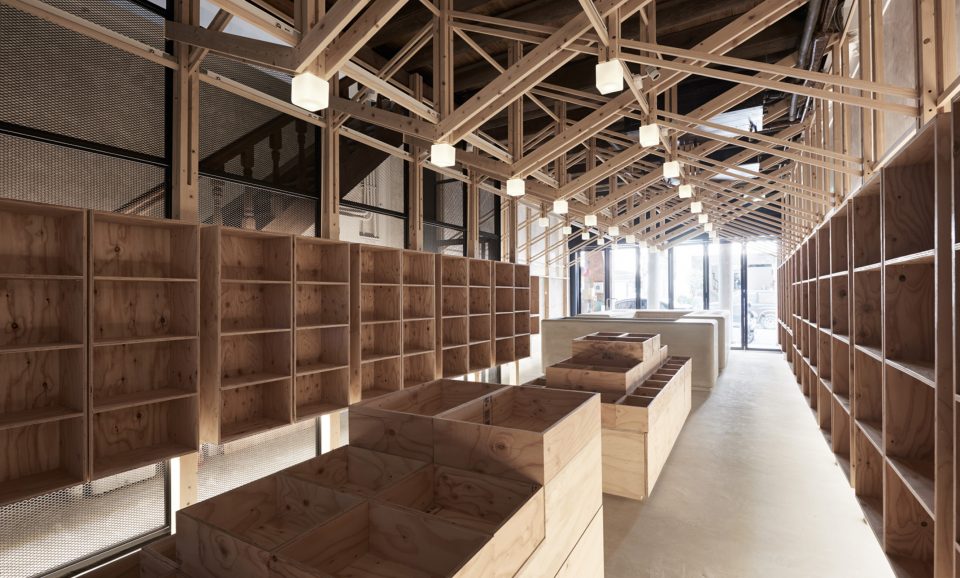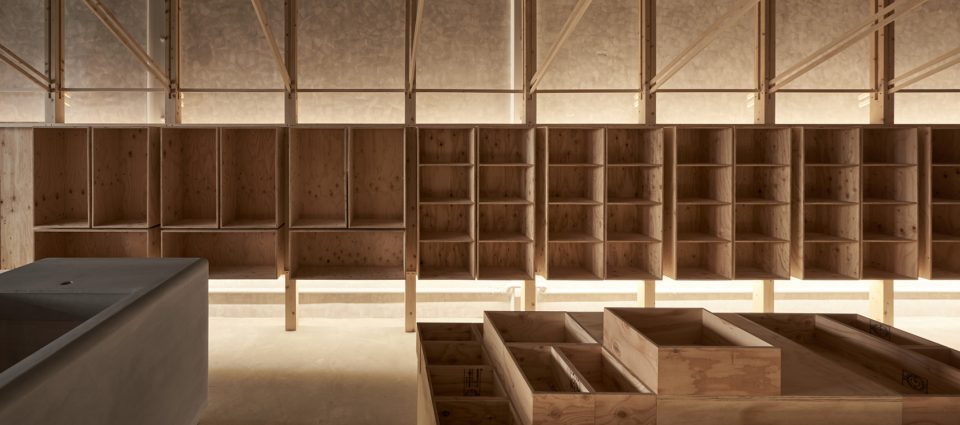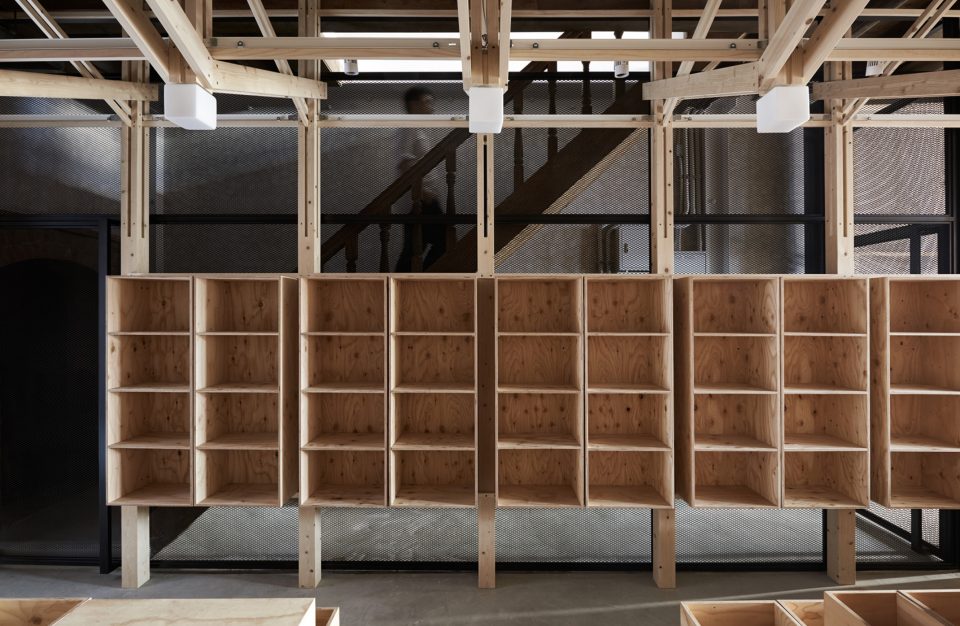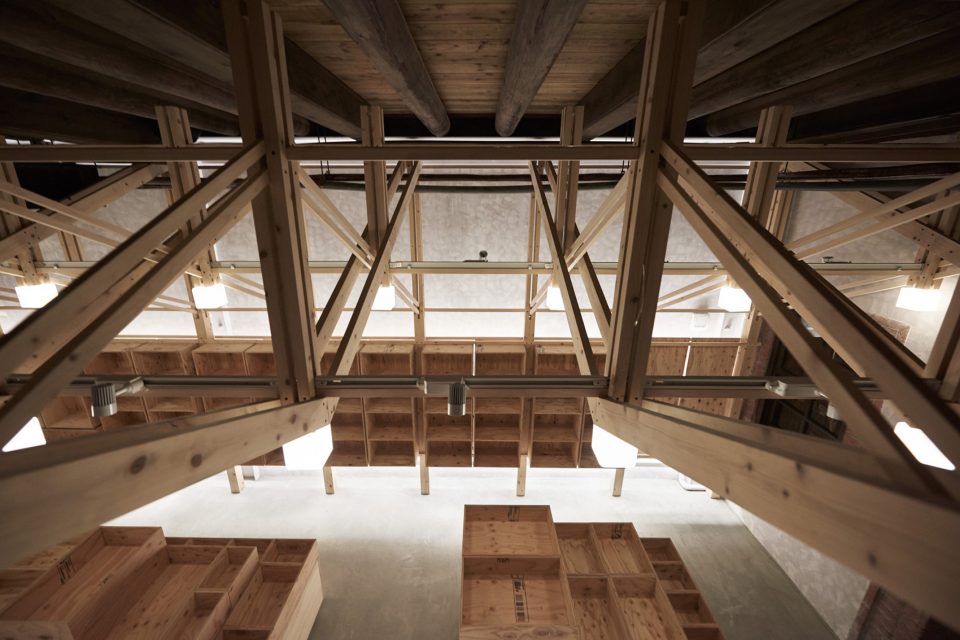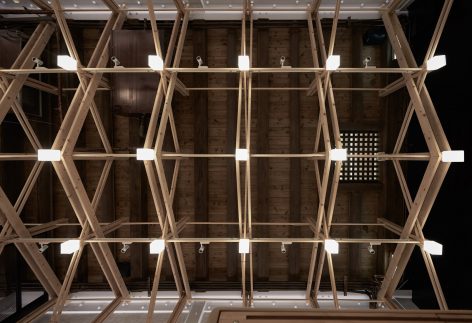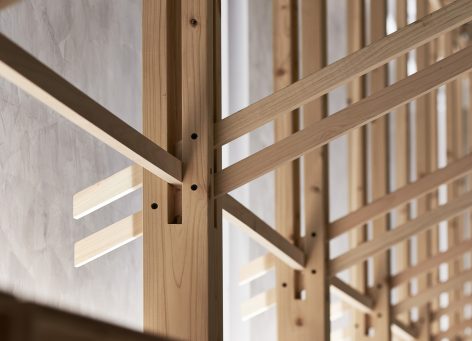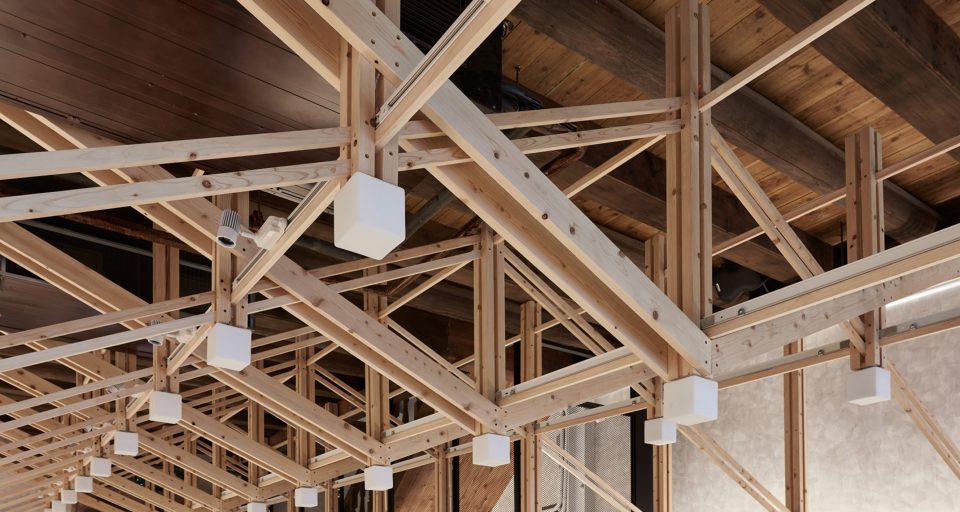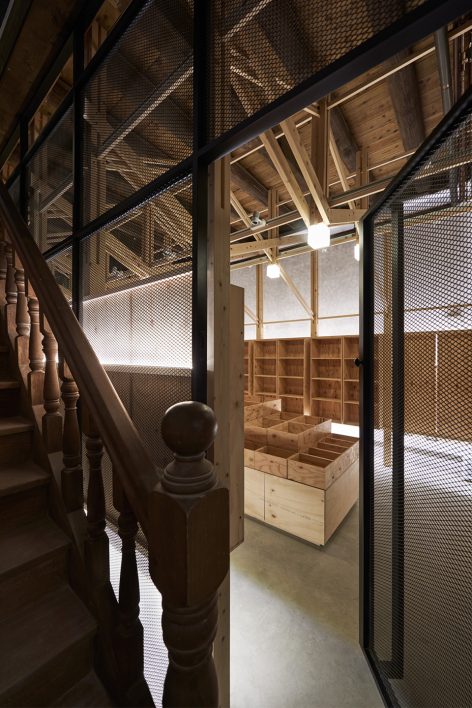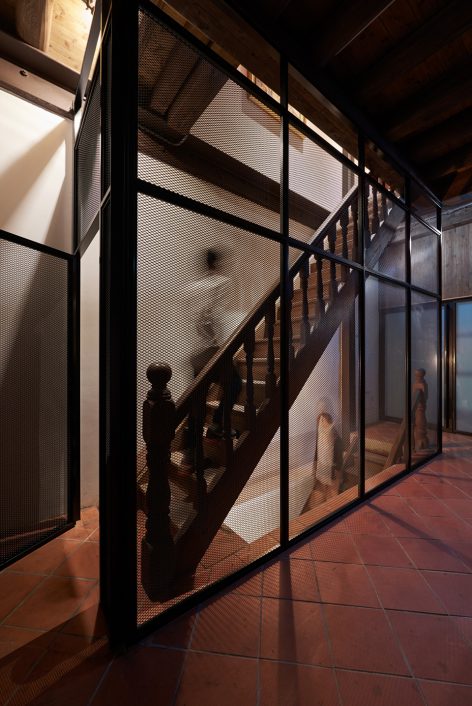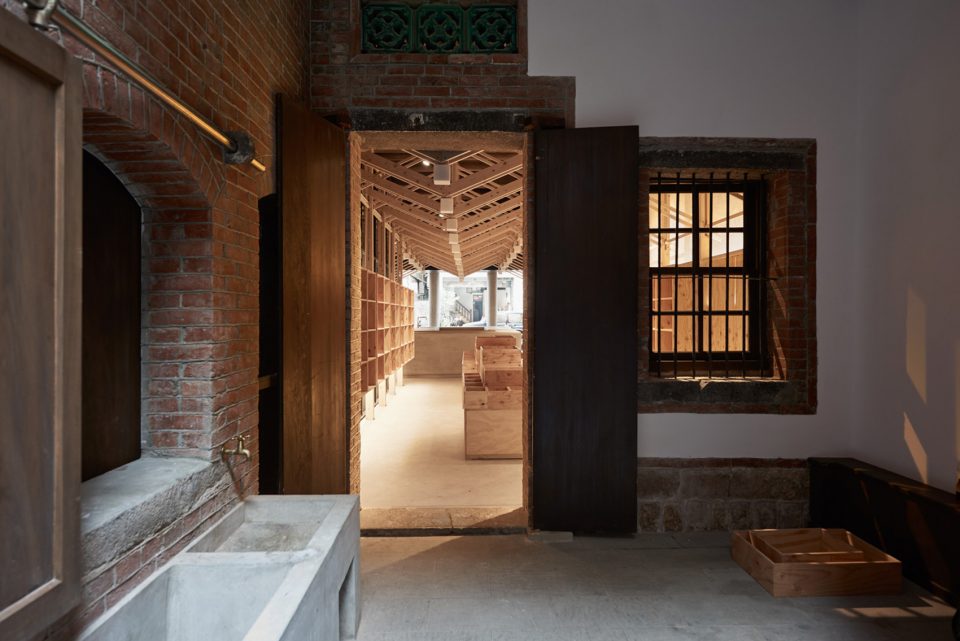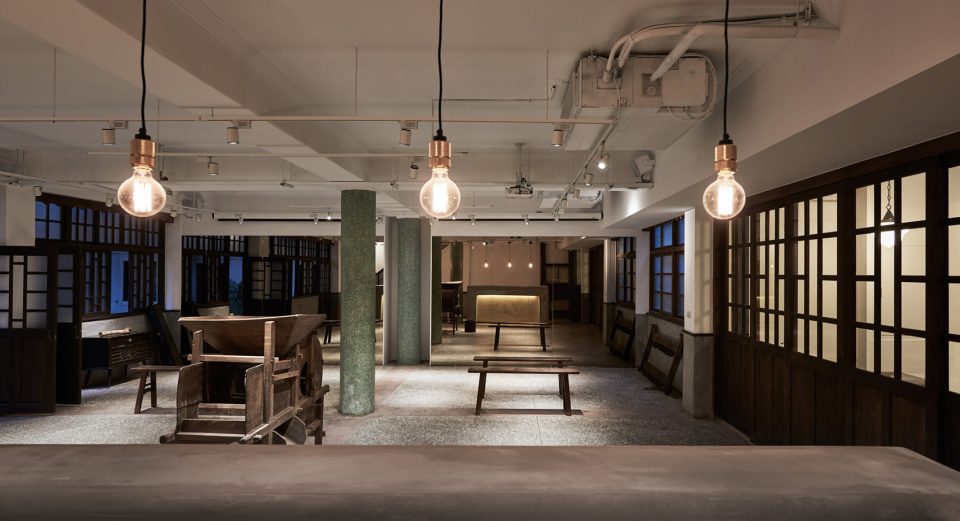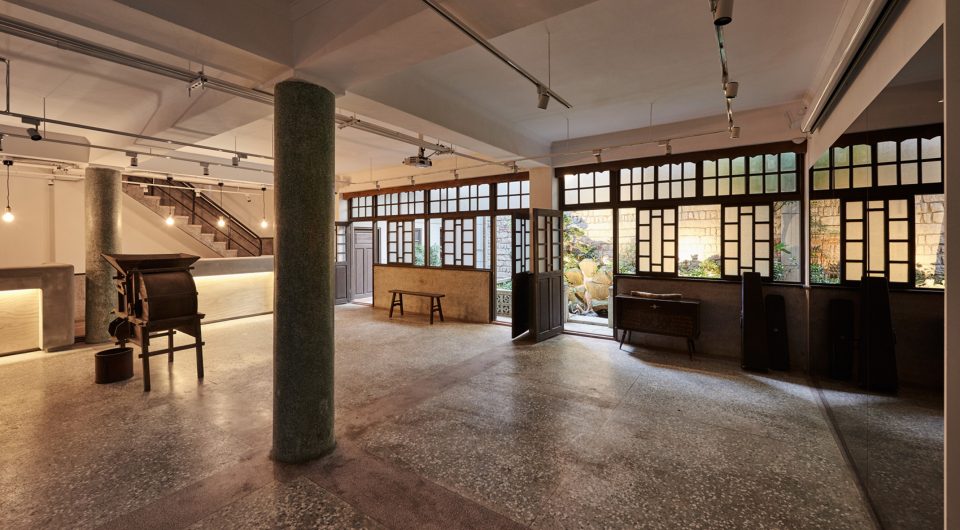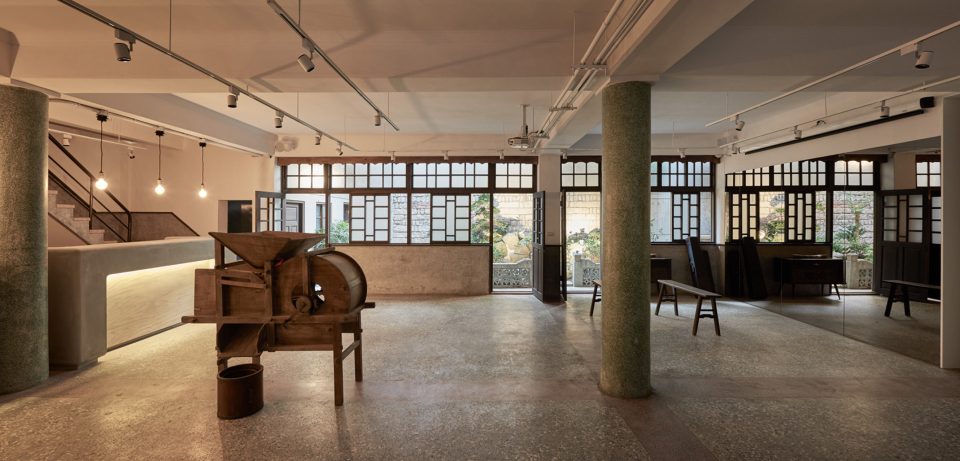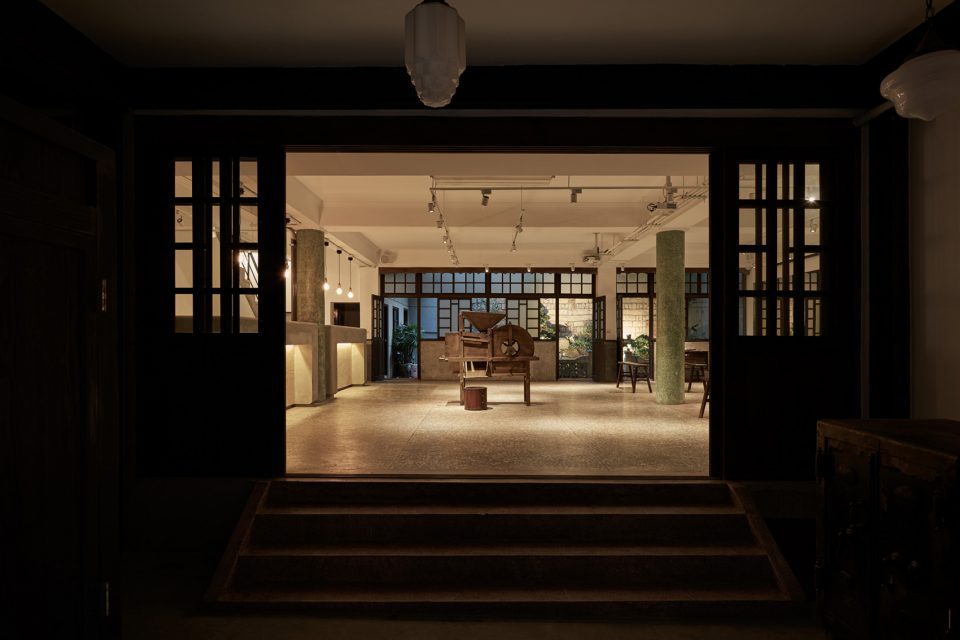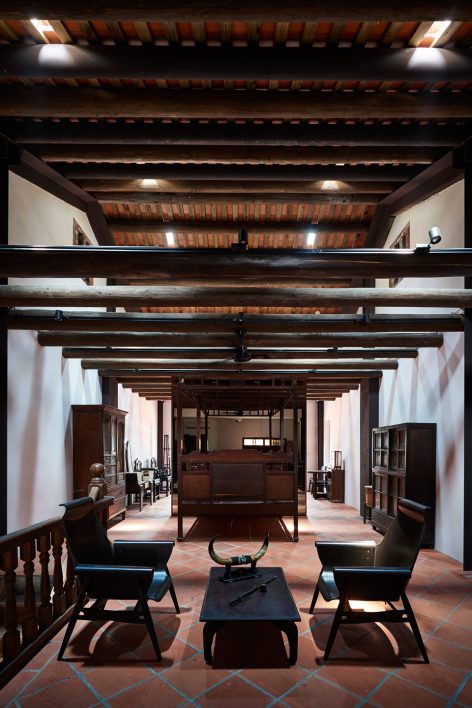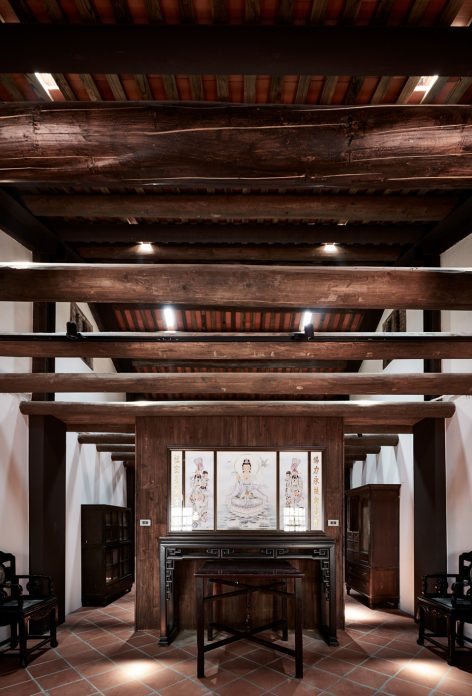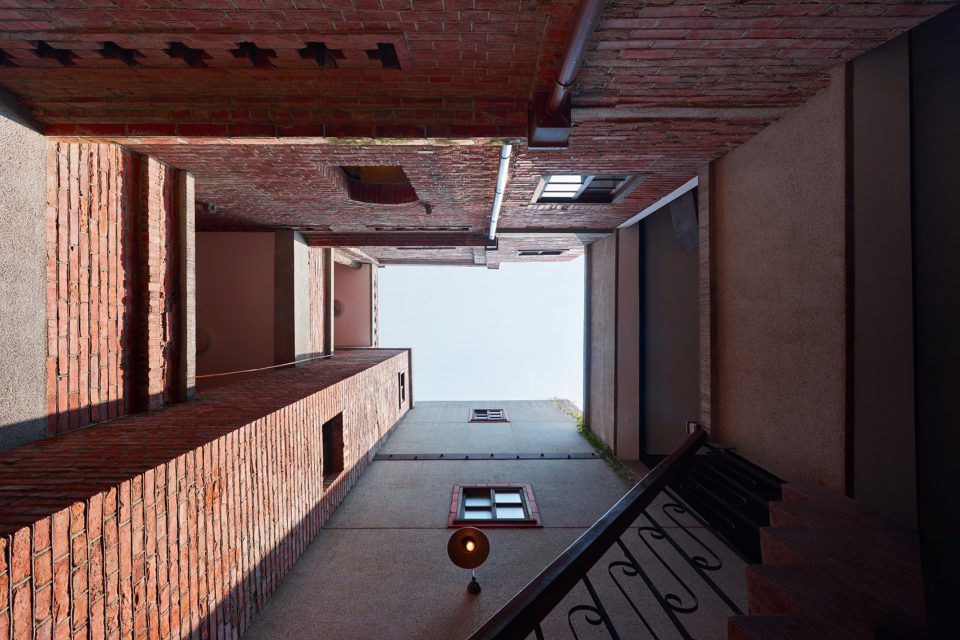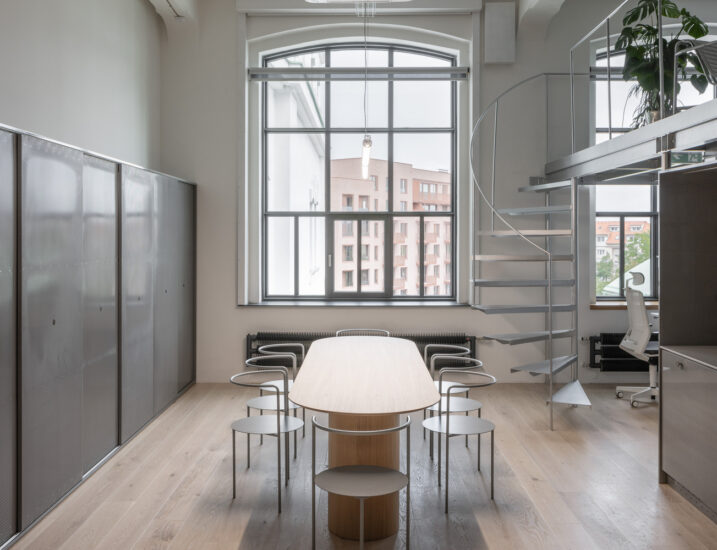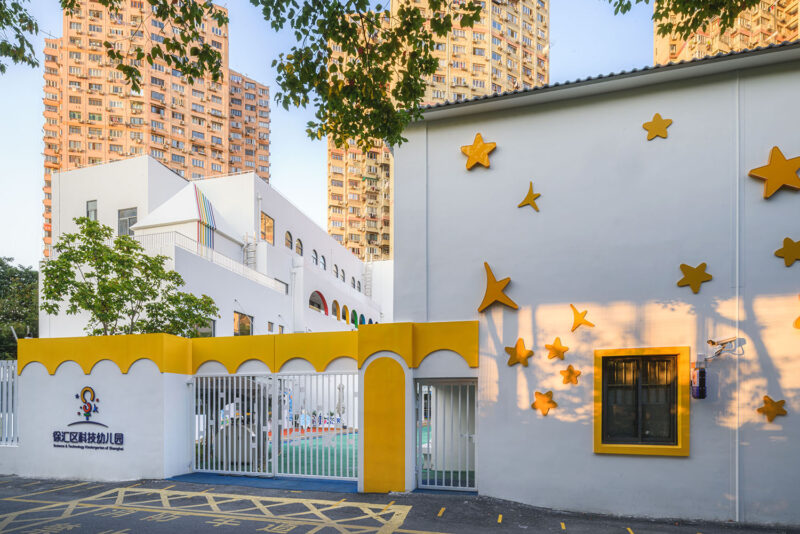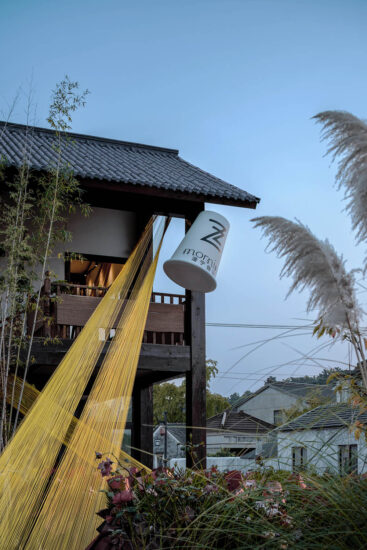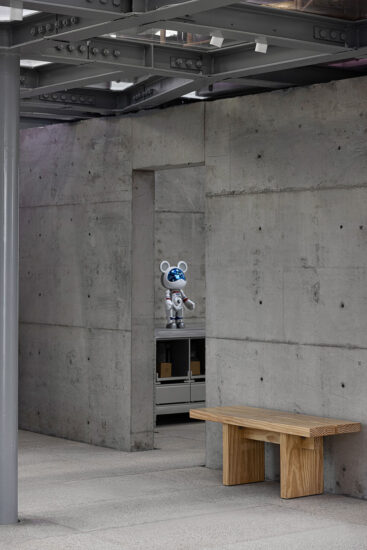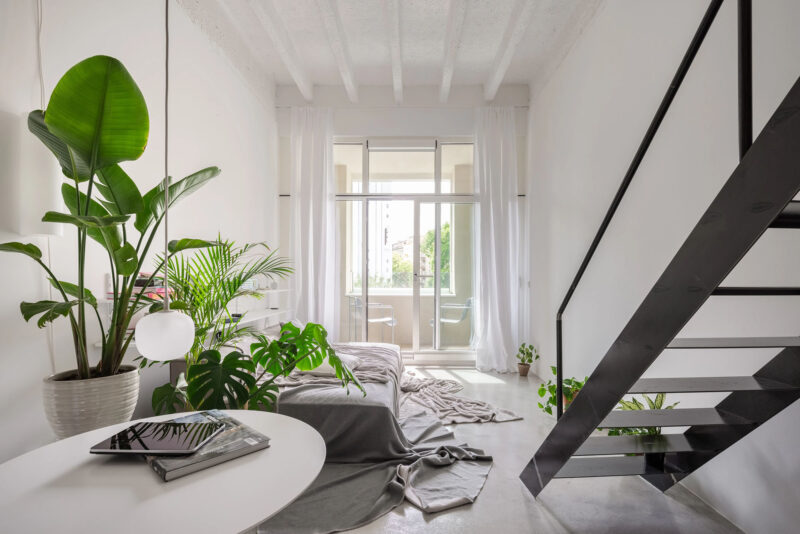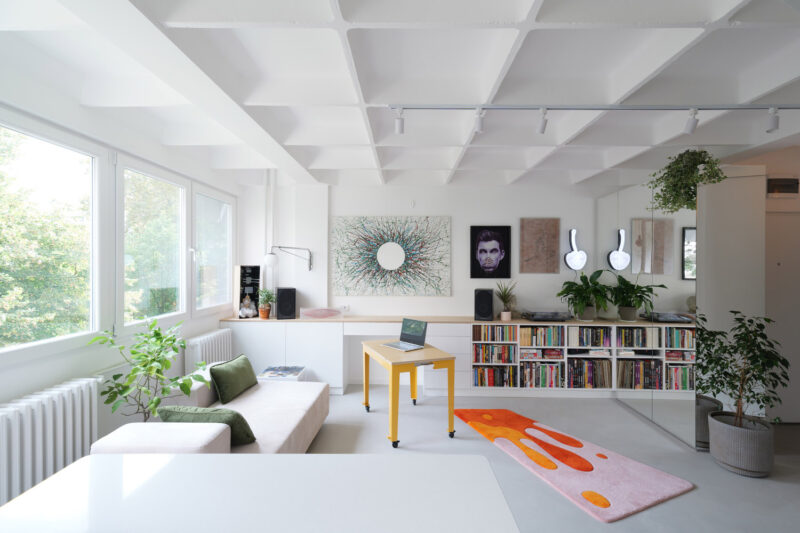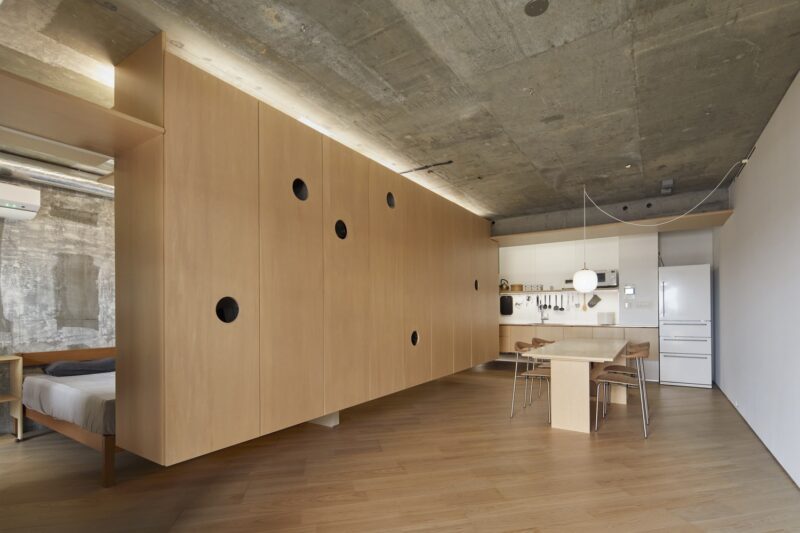曆史建築,本來就乘載著許多具有時間意義的空間架構與生活樣貌的特性氛圍,麵對老宅邸的再活化,很重要的是必須讓建築初始之美先借由 “整理”來重現,並保有可以閱讀與體現生活痕跡的狀態,因此新的空間圍塑該以什麼操作的態度來開展它,采用的作法不會太輕與太重,變成為此次過程主要的課題。
Historical building contains many strong characteristic of space and living and it expresses the significance of the certain age. While facing the renovation of a historical building, our first intention is to “re-specify” the initial gestures of the space in order to remain the condition for the traces of time could be experienced. Therefore, carefully but distinctive inserting an element to shape new spaces become the key issue of this project.
“結構作為家具”- 輕的置入 | Structure as furniture
此案件除了整體建築空間的基礎修繕整理外,嚐試以最微度的調整將少數拆卸材料再利用,及最輕量的作法小心地加入來襯托空間外,主要設計采取減少碰觸、減少鎖固等不破壞曆史建築的原則。透過一組完全與老屋略微脫開及自我組立(Free-standing)的構架,以自承重的反向木桁架支撐起屋架與展示牆麵於空間中,是為結構也為家具,將新的空間所需之燈光、機電、商品貨架係統整合,並采用反向梁意圖創造新的秩序與舊有木梁與天花及補強鋼構互映。
Minimal utilizing the historic space and re-using original materials are our main concept of the design. The main timber truss for retail shop at the front room introduces the idea of “Structure as furniture”, a free-standing individual component that is detached with the existing wall. The idea of moderate intervention with minimal attaches and less anchoring that will undermine the existing building is taking place in this project. The timber truss is a structure designed to support the display shelf and to integrate the wiring of lighting and air-conditioning units. The truss appeared as an inverted frame is a modest response of a new insertion to an old building.
此外迪化街的北街本來就有許多碾米商,葉家也是其中之一,因此米鋪的重新置入就特別有意義,空間中除了重新放回葉家熟悉的原件,讓音樂與米相關之木器以曆史文物的姿態回到空間,木構架更是采用既有葉家米商常用的木器材料日檜作為主要材質,除了顯性的形式外,質地上的隱性回應更是一種對老房子的尊重態度。
Yeh family is one of the many grain stores locate in Dihua street, where it is the central commercial area of Taipei during the time. We remain considerable amount of existing furniture and grain equipment replaced back to the space to give its presence of the historic context. The timber used for the truss is made from Japanese cypress that is also used to make gain utensils at the time as well. Besides the gentle explicit response of the form, the implicit connection of materials and textures is also our design thinking towards a historic building.
完整項目信息
項目名稱:台北葉晉發商號米糧桁
項目位置:中國,台灣,台北
項目類型:商業空間/建築改造
完成時間: 2016 / 8
主要設計 : 蔡嘉豪 / 魏子鈞
細部設計 : 蔡嘉豪 / 林姿利 / 陳建同
木構施作 : 陳建同( 與木製研 ) / 堤輝工程
合作夥伴 : dotze innovations studio / 與木製研
所用材料 : 日本檜木 / 鬆木夾板 / 樂土灰泥 / 馬來漆 / 鐵件
攝影:Sefval Mogalana
空間攝影 : Hey! Cheese


